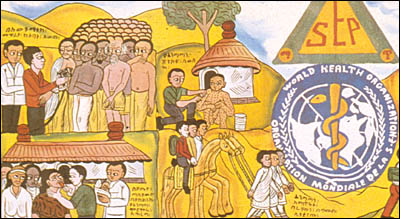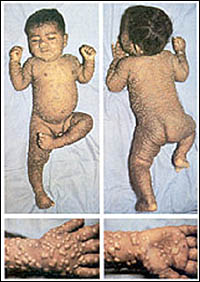
Obstacles and Struggle
Vaccinators still had to overcome religious and cultural barriers. Medical demands often clashed with ethical considerations as in India. There, one religious leader’s opposition to vaccination ensured the continued presence of smallpox. After much debate, WHO leaders forcibly vaccinated the religious leader, opening up the door for the vaccination of his followers and the successful containment of smallpox. While forcible vaccination worked in some instances, it caused riots in other areas.
The chaos which accompanied war tended to raise suspicions regarding the WHO team. WHO vaccinators were threatened at gun-point and in civil-war torn Nigeria, ceasefires were specially negotiated to allow for the transfer of vaccine.
WHO members vaccinated in a concentric ring around an outbreak but this required prompt reporting of all smallpox cases. Cash bounties were paid to people who reported smallpox cases. Suspect cases were then investigated and a WHO team moved in to vaccinate and arrest the outbreak.


Low levels of literacy in smallpox infested regions meant that WHO needed to communicate using images, not written text. Posters such as this one were used to educate people on the dangers of smallpox and the need for vaccination.



The front and back of the WHO smallpox recognition card. The card, which portrays a patient with relatively mild smallpox, was widely used from 1971 to facilitate case detection in endemic countries.
Last Reviewed: March 5, 2024

